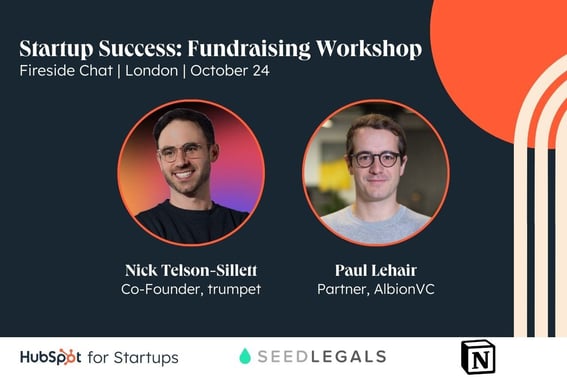Mastering Pitch Decks with Corey Wright
Explore Corey's entrepreneurial journey and gain valuable insights into mastering fundraising, crafting effective pitch decks, and building investor relationships. This guide provides essential strategies for navigating the complexities of entrepreneurship and achieving startup success.
By viewing this video, you give your consent for Wistia, inc. to set cookies on your device. Check out our privacy policy

Introduction
As Director, Startup Programs Europe for Start2 Group, Corey oversees a diverse array of entrepreneurial initiatives across Germany/Europe and ensures the excellence of Start2 Group’s global offerings. These programs support over 300 startups annually, providing him with in-depth insight into emerging technologies and products shaping our future.
Corey shares his unconventional path into entrepreneurship, starting with an organic turkey business at age eight. From scaling biotech startups to building entrepreneurial ecosystems and managing hundreds of pitch decks, Corey offers insights into the world of fundraising and investor relations.
Actionable Insight: Reflect on your unique entrepreneurial story and craft a compelling narrative to introduce yourself to investors—it helps build rapport and sets the tone for your pitch.
Understanding Fundraising: Signals Matter
Fundraising is about mastering rejection and sending the right signals. Corey introduces the concept of “signaling” as a tool to navigate investor complexities, emphasizing three rules: you’re always signaling, signals matter, and they are adjustable through self-awareness and feedback.
Actionable Insight: Before any investor meeting, identify the key signals you want to send and ensure your pitch, behavior, and materials align with those signals.
Crafting a Pitch Deck: Components, Not Slides
Corey discusses the 10 essential components every founder should master when building their pitch deck. A consistent, logical story needs to flow through all components, showing alignment between the business problem, customer value, and market fit.
The 10 Key Components of a Pitch Deck:
- Problem: Define the problem your product or service addresses and quantify its impact.
- Solution: Clearly explain how your product or service solves the problem, focusing on customer benefits.
- Market Opportunity: Highlight the Total Addressable Market (TAM), Segmented Available Market (SAM), and Serviceable Obtainable Market (SOM) to show market size and focus.
- Business Model: Describe how your business makes money, including key revenue streams and pricing strategies.
- Traction: Show evidence of progress, such as customer growth, partnerships, or revenue metrics.
- Competition: Identify competitors, differentiate your solution, and highlight your unique value proposition.
- Team: Introduce your founding team, emphasizing their experience and why they’re equipped to succeed.
- Financials: Provide an overview of your financial model, including projections, customer acquisition costs (CAC), and lifetime value (LTV).
- Use of Funds: Specify how the investment will be used to achieve specific milestones or outcomes.
- Vision: Share your long-term vision, including growth opportunities and potential exit strategies.
Actionable Insight: Use this structure as a checklist to ensure your pitch deck addresses all critical areas, and maintain a cohesive narrative that aligns your problem, solution, and market opportunity.
Explaining the Problem: It’s About Pain and Value
Investors don’t inherently understand your customers or their pain points. Corey stresses quantifying the value of the problem and using storytelling to humanize complex solutions. The goal is to convince investors the problem is real and worth solving.
Actionable Insight: Use customer personas and real-world examples to make the problem relatable and demonstrate the pain points your solution addresses.
Simplifying Solutions: Focus on Customer Benefits
A compelling solution is explained simply and in terms of customer benefits, not product features. Corey highlights the importance of clear communication, quantifying value creation, and showing investors you understand customer needs.
Actionable Insight: Practice summarizing your solution in one simple sentence that focuses on customer benefits, not technical details.
Targeting the Market: TAM, SAM, SOM Breakdown
Corey demystifies Total Addressable Market (TAM), Segmented Available Market (SAM), and Serviceable Obtainable Market (SOM). He emphasizes the importance of realistic assumptions, focusing on specific customer segments, and aligning market size with your business model.
Actionable Insight: Define your TAM, SAM, and SOM based on customer discovery and validation—use realistic, data-driven assumptions to build credibility.
Competitive Landscape: Differentiation Through Depth
Competition signals demand. Corey recommends moving beyond simple charts and showing a detailed competitive analysis based on customer benefits, market positioning, and long-term vision. This demonstrates thorough research and realistic understanding of the market.
Actionable Insight: Create a competitive matrix that highlights not just features, but how your solution provides unique customer benefits.
Highlighting Your Unfair Advantage
Corey discusses showcasing what sets your startup apart, whether it’s unique insights, disruptive technology, or timing. The team’s ability to execute and adapt is critical in convincing investors you’re the outlier they should bet on.
Actionable Insight: Identify and articulate one or two unique factors that give your company a competitive edge, whether it’s expertise, technology, or market timing.
Revenue Model: Know Your Numbers
Corey stresses understanding critical financial metrics such as customer acquisition cost (CAC), lifetime value (LTV), churn, and time-to-value. Founders should present clear, simplified financial models that highlight key business assumptions.
Actionable Insight: Calculate and monitor your CAC, LTV, churn, and time-to-value metrics early—these numbers form the backbone of a compelling financial pitch.
Team: The Core Signal
Investors prioritize the team above all else. Corey advises showcasing competence, self-awareness, and action-oriented behavior. He emphasizes that all other signals—traction, market fit, etc.—reflect the team’s ability to execute.
Actionable Insight: Highlight specific achievements and experiences that demonstrate your team’s ability to execute and adapt in challenging environments.
Traction and Momentum: Proof of Progress
Traction validates your team’s capabilities. Corey discusses pre-revenue and post-revenue metrics, cautioning against overemphasizing awards or partnerships without showing momentum. Investors want to see progress and commitment.
Actionable Insight: Show meaningful traction by presenting metrics like customer growth, revenue, or product adoption that illustrate momentum toward your goals.
Asking for Investment: Aligning Needs with Goals
Corey advises founders to request the funding necessary to reach the next milestone, focusing on outcomes rather than outputs. He highlights the importance of having a clear, actionable plan for how the money will be used.
Actionable Insight: Define a clear funding ask tied directly to specific outcomes and milestones that demonstrate risk reduction and progress.
Networking with Investors: Build Relationships, Not Pitches
Corey emphasizes networking over cold pitching, suggesting a tiered approach to pitching investors. He advises starting with lower-priority investors to refine your pitch before approaching top-tier investors.
Actionable Insight: Create a prioritized list of potential investors, starting with those less critical to refine your pitch, and work your way to top-tier targets.
Timing Your Fundraise: Balancing Strategy and Market Readiness
Corey discusses the nuances of when to fundraise, balancing the need for traction with market timing. He encourages bootstrapping where possible but acknowledges the complexities of deep tech and global competition.
Actionable Insight: Evaluate market conditions, competition, and internal readiness to determine the optimal time for fundraising—don’t rush unless external factors demand it.
Final Tips: Signal Value and Build Relationships
Corey concludes with advice on sending positive signals through preparation, clear communication, and emotional intelligence. Founders should focus on creating value for customers, teams, and investors while building meaningful connections.
Actionable Insight: Before approaching investors, ensure your materials, communication style, and overall approach send a signal of competence, preparation, and long-term vision.
~~~
This blog post is an AI-generated summary of the video using Arbor Storytelling Platform.
More Resources

State of Fundraising Annual Report
A comprehensive report from HubSpot for Startups with actionable insights for startup founders on how to raise capital faster and more effectively.

From Bootstrap to VC: Fireside Chat
Explore the journey from bootstrapping to VC funding with insights from Nick Telson of Trumpet and Paul Lehair of Albion VC. Learn strategic fundraising advice, the importance of building momentum, and the value of choosing the right investors.

The Killer Pitch Deck
Dan Bowyer, co-founder and partner of Superseed Ventures shares strategies for crafting standout pitch decks, building investor trust, and navigating the VC journey with authenticity and strategic storytelling.
